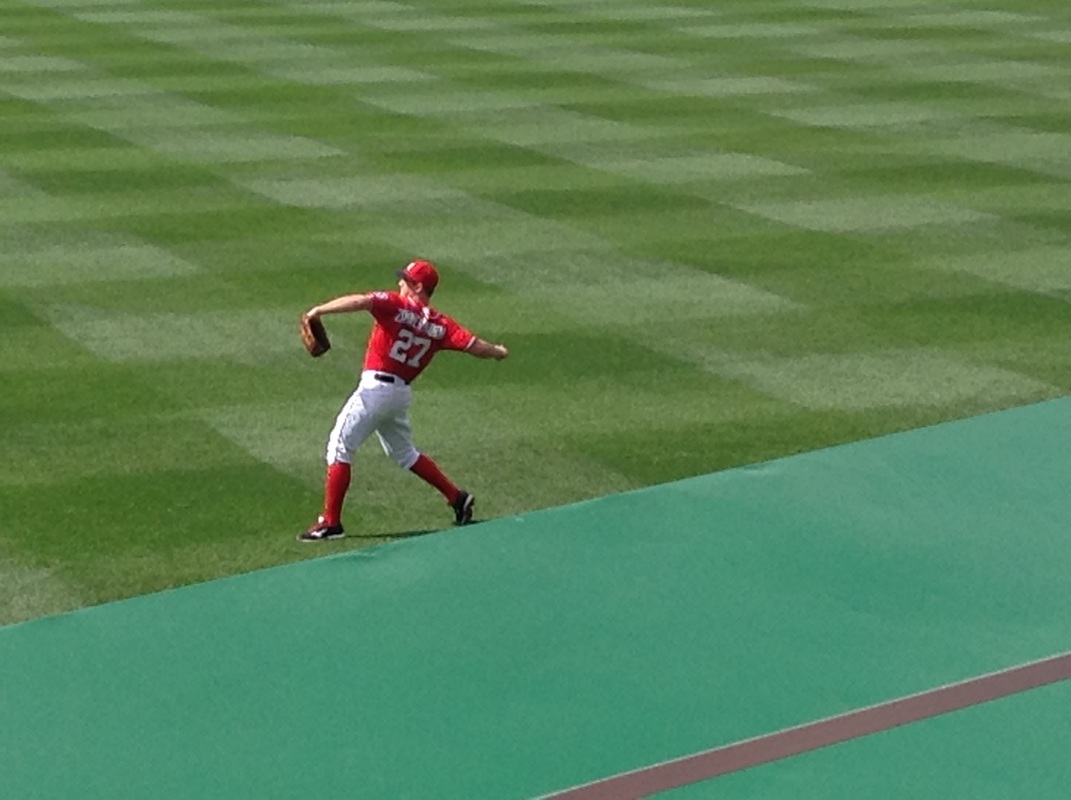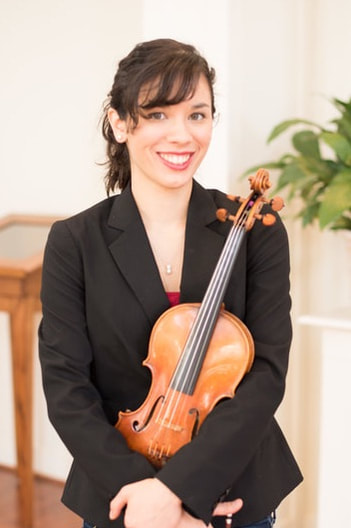My students will probably be surprised to learn that in a former life, I was a fast pitch softball pitcher. My career didn't progress beyond one season on high school varsity -it was impossible to be both a serious softball player and a serious violinist, so I chose violin - but I love the game. Baseball was always on in my house when I was a kid, and my own (admittedly limited) pitching experience gives me a little extra insight. The focus required to stay in control on the mound is incredible. It takes physical endurance and training, certainly, but it is also a mind game. The pitcher always has to stay one step ahead of the hitter.
Earlier today, I had a vague idea of writing a blog tying in an athlete's warmup routine with a musician's. If you're at the ballpark early enough, you'll see the athletes on the field beforehand. Because of where we were sitting, I was able to watch most of Jordan Zimmermann's routine.
He started with stretches and arm circles, slowly loosening his muscles. Only after several minutes of this while he chatted with his coaches and catcher did he start throwing - and he didn't start pitching right away. He started throwing overhand at a short distance at a fraction of his pitching velocity.
It was fascinating for me to watch him move through this warmup routine with ease. I'm sure he does this before every single game. I was also thinking about my violin students, and realized that I haven't emphasized the importance of a warmup routine enough in their lessons.
Yes, I promise - there's a musical connection in this blog. You see, playing the violin takes just as much physical endurance and mental concentration as playing a sport at a high level. It requires all the muscles in your body to work together. The muscles that aren't actively playing the instrument need to be relaxed and loose so no excessive tension will limit your sound. The muscles that ARE playing the instrument need to move in the most efficient way possible.
Warming up is incredibly important for musicians. Before you play, arm, shoulder, and neck circles are a good idea to get the circulation in your body going. When you start playing, start with slow, deliberate motions. Do some slow bow circles using a full bow or play a scale using long bows to warm up your bow arm. Notice how you're holding the bow, how your arm is working, and if it feels smooth or if there are any bumps in your motion or the sound. For the left hand, slide up and down the fingerboard slowly to warm up your arm, or try some tapping exercises to get the fingers going.
Just like Jordan Zimmermann did, start with stretching for your body and then switch to slow, easy, basic motions. Gradually increase the speed and complexity of your playing. Add some different bow strokes or play shifting exercises that take you through a variety of positions.
Once you are thoroughly warmed up, then launch into the rest of your practice.
Did Jordan Zimmermann's warm up pay off, you ask? He pitched a complete game, which was the first no-hitter in Nationals history. He struck out 10 hitters and gave up one walk. He also made some great plays on the field and even got two hits of his own. It was an incredible final game of the regular baseball season and the perfect prelude to the postseason. Read more about his historic game in the Washington Post.
(And to my students, if you have any doubt on what your warmup exercises should be, take a look at your practice charts. The first two boxes are your warmup exercises. Feel free to add others, but use the ones I recommend as a starting point.)
Oh, and as for rookie Steven Souza Jr's amazing catch that ended the game? He warmed up for that, too. I didn't have a great view of left field from my seat, but the article by Thomas Boswell linked above mentions it.
"In the top of the ninth inning, defensive replacement Steven Souza Jr. began practicing explosive sprints in left field, not the usual “get-loose” running of baseball. "
Time for the post-season! Let's go, Nats!



 RSS Feed
RSS Feed